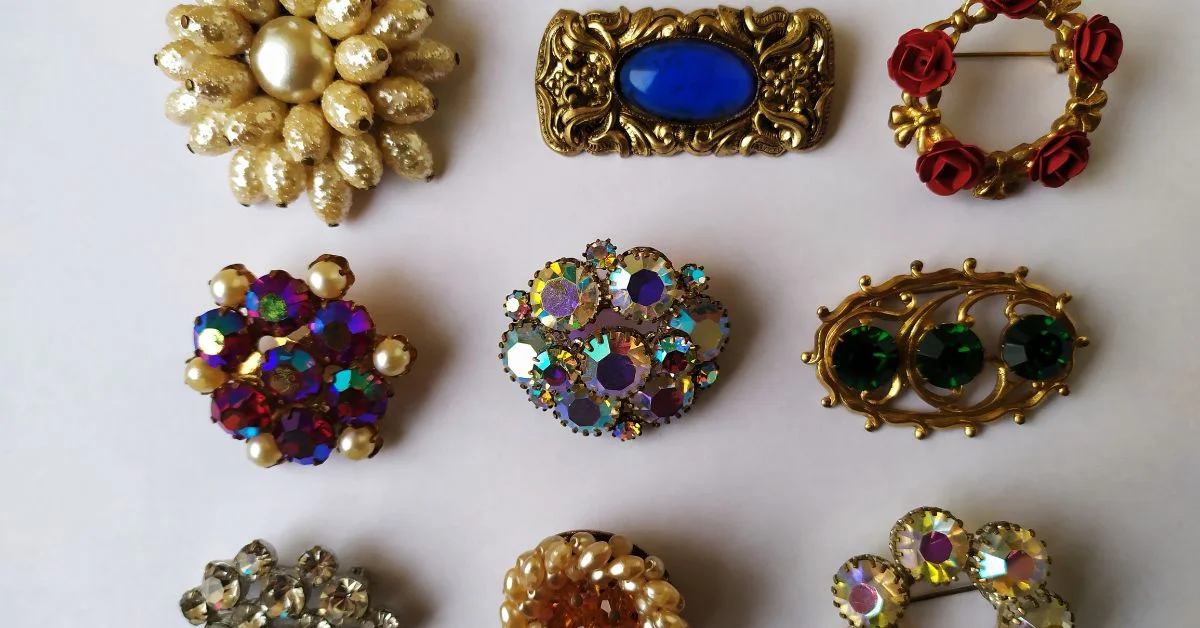The word sagės refers to brooches or decorative pins, which have long been used not only as accessories but also as objects of symbolism, tradition, and identity. In Lithuania and other cultures, sagės are more than jewelry; they represent art, heritage, personal expression, and even status. They have been present since ancient times, worn by both men and women, crafted from a wide variety of materials, and used in countless different ways. To understand sagės is to explore not just their physical forms but also the cultural, historical, and social significance attached to them. This article will provide a deep look at sagės: their history, traditional meanings, styles, symbolism, and their place in modern life.
The Historical Origins of Sagės
Brooches, or sagės, are among the earliest forms of jewelry in human history. Archaeological evidence reveals that people in ancient civilizations wore sagės not only to decorate themselves but also to hold clothing together. In regions of Europe, sagės were practical items before they became decorative. For example, ancient warriors used metal pins or fibulae to secure cloaks, which gradually evolved into more artistic and meaningful ornaments.
In the Baltic region, including Lithuania, sagės were often made of bronze, silver, or iron and featured detailed engravings. These pieces were functional but carried deep symbolism, often representing nature, animals, or spiritual beliefs. Sagės in early history often denoted social class—richer families had more ornate and intricate designs, while simpler versions were common among ordinary people.
Over time, sagės became more than tools; they turned into tokens of craftsmanship and markers of identity. Each period of history left its influence, from medieval guild styles to Renaissance artistic designs and modern minimalistic interpretations.
Traditional Symbolism of Sagės
In Lithuanian culture, sagės were not only decorative but also symbolic. Traditional designs often carried motifs inspired by nature, mythology, or geometric forms. These designs communicated meaning and identity:
- Sun symbols on sagės represented life, fertility, and continuity.
- Animal motifs, such as birds or horses, symbolized protection, prosperity, and spiritual guidance.
- Geometric patterns carried ancestral meanings, with circles representing unity, triangles symbolizing balance, and spirals depicting eternal cycles.
- Cross-like forms in sagės reflected spiritual or cosmic beliefs, long before Christian influences.
Sagės also played a role in social rituals. For example, they were often given as gifts during marriages, used as heirlooms, or passed down across generations to carry ancestral memory. They could serve as protective charms, believed to ward off evil or attract good fortune.
The Craftsmanship Behind Sagės
The artistry of sagės is as important as their symbolism. Traditionally, skilled craftsmen would spend hours shaping, engraving, and polishing metal to create brooches that were both practical and beautiful. Depending on the era and the social status of the owner, sagės were crafted from different materials.
- Bronze sagė were common in early Baltic regions due to availability and durability.
- Silver sagė were treasured for their shine and were popular among wealthier classes.
- Gold sagė were rare but existed among elites, often richly decorated with gemstones.
- Wooden and bone sagė were also made in rural settings, combining practicality with symbolism.
Crafting sagė required knowledge of metallurgy, engraving, and design. Patterns were carved by hand, and many sagė were unique, reflecting local traditions or family identity.
Types of Sagės Through History
To better understand sagės, it is useful to look at the various types and forms that have evolved through history. Below is a table outlining major categories:
| Type of Sagės | Description | Cultural Significance |
|---|---|---|
| Fibula-style Sagė | Pin-like fasteners used in antiquity to secure clothing. | Practical and decorative, worn by warriors and nobles. |
| Geometric Sagė | Circular, triangular, or spiral shapes engraved into metal. | Represented unity, balance, eternal cycles. |
| Nature-inspired Sagė | Designs featuring birds, flowers, sun, or animals. | Symbolized protection, fertility, prosperity. |
| Ornamental Sagė | Made from silver or gold, decorated with stones or enamel. | Status symbols, worn by elites or gifted in rituals. |
| Modern Fashion Sagė | Artistic or minimalistic designs, often made of mixed materials like ceramics. | Personal expression, fashion statement. |
Sagės in Traditional Lithuanian Dress
Lithuanian national costumes often include sagė as an essential accessory. Women’s traditional blouses, shawls, or aprons are frequently fastened with sagė, adding not only a decorative element but also a mark of cultural pride. These traditional sage are usually silver, with intricate engraving or filigree patterns that reflect regional craftsmanship.
During festivals, weddings, or national celebrations, sagė still appear as part of the attire. They represent continuity with the past and remind wearers of their heritage. In some regions, sagė were so significant that they indicated marital status—larger, ornate sagė could symbolize a married woman, while simpler sagė suggested youth or unmarried status.
Sagės as Family Heirlooms
Sagės often travel through generations as family heirlooms. A grandmother’s silver brooch may be passed down to her granddaughter as a symbol of continuity and love. These items carry not only material value but also emotional significance, as they preserve memories, family stories, and cultural traditions.
Heirloom sagė also highlight the endurance of craftsmanship. Unlike disposable modern accessories, sagė were designed to last for centuries. Even today, many families treasure old sagė as part of their heritage, keeping them safe as cultural relics.
Sagės in Modern Fashion
In the modern world, sagės have gained a new dimension. No longer confined to traditional clothing, they are now widely used in fashion as statement pieces. Designers reinterpret sagė by blending old motifs with modern styles. For instance:
- Minimalistic geometric sagė are popular in contemporary jewelry.
- Vintage-inspired sagė are valued in fashion markets and antique collections.
- Bold, oversized sagė are used in haute couture to create dramatic effects.
- Eco-friendly sagė made from recycled wood, ceramics, or sustainable metals appeal to environmentally conscious consumers.
Sagės are also versatile. They can be worn on jackets, scarves, hats, or even handbags, providing endless opportunities for creativity.
The Cultural Revival of Sagės
In Lithuania and other parts of Europe, there has been a revival of interest in sagė. This revival reflects a broader cultural movement to reconnect with traditions, respect craftsmanship, and find identity in heritage. Contemporary jewelers study ancient sagė and recreate them using both traditional and modern techniques.
This cultural revival also has educational value. Museums, cultural institutions, and schools often highlight sagė as part of heritage education, teaching younger generations about their symbolic meaning and artistic value.
The Social Meanings of Sagės
Sagės also carry social meanings that go beyond decoration. In history, sagė could show a person’s rank, marital status, or tribal affiliation. In modern times, sagė often serve as markers of personality, style, or even political identity. For example, wearing a specific type of brooch during cultural events can symbolize national pride or solidarity.
Brooches have even been associated with famous personalities—certain world leaders and cultural icons have been known for their love of sagė, making them part of personal branding. Thus, sagėsremain powerful cultural symbols, bridging tradition and individuality.
The Future of Sagės
Looking ahead, sagė are unlikely to disappear from cultural or fashion contexts. With sustainability, handmade craftsmanship, and heritage becoming more valued globally, sagė may continue to gain popularity as meaningful and eco-friendly jewelry. Their adaptability ensures relevance: they can be ancient heirlooms, modern art pieces, or everyday accessories.
Technology may also influence sagės design. Laser engraving, 3D printing, and innovative materials allow for fresh creative approaches. Yet, even with these innovations, the deep cultural symbolism of sagė remains unchanged, ensuring their place as timeless artifacts of human creativity.
Conclusion
The journey of sagės—from practical pins to symbols of culture, fashion, and family heritage—demonstrates the richness of human expression. In Lithuania and beyond, sagė are more than jewelry. They are objects of meaning, art, history, and identity. They connect generations, reflect traditions, and adapt to changing fashion trends while retaining their timeless beauty. Whether worn in traditional costume, gifted as heirlooms, or showcased in modern fashion, sagė remain powerful symbols of elegance and cultural continuity.
FAQs
1. What does the word “sagė” mean?
Sagė is the Lithuanian word for brooches or decorative pins, often used both as fashion accessories and cultural symbols.
2. What materials are sagė traditionally made from?
Traditional sagė were made from bronze, silver, gold, or sometimes wood and bone, depending on social class and purpose.
3. Are sagė still used in Lithuania today?
Yes, sagė are still popular, especially during cultural events, in traditional costumes, and as modern fashion accessories.
4. What is the symbolism behind sagė designs?
Sagė often feature symbols of the sun, animals, or geometric patterns, representing fertility, protection, unity, and ancestral beliefs.
5. Can sagė be considered heirlooms?
Absolutely. Many families pass sagė from generation to generation, preserving them as cultural and personal treasures.
For more information, click here.









